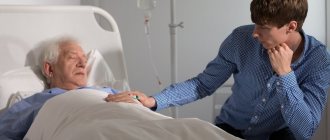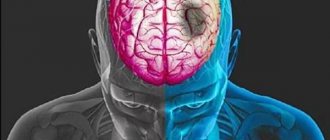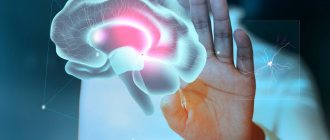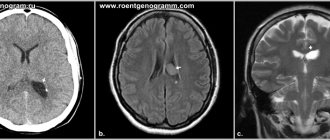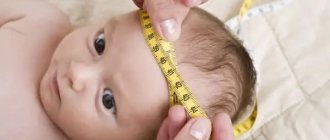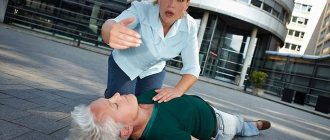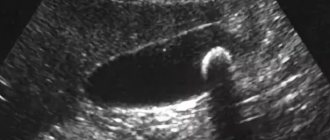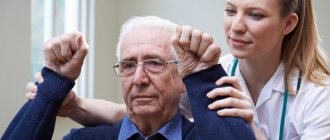The Yusupov Hospital provides care to patients with acute cerebrovascular accidents of various origins (ischemic stroke, hemorrhagic stroke, transient ischemic attack, hypertensive crisis complicated by acute hypertensive encephalopathy), as well as patients with disorders of vital body functions due to the development of acute cerebrovascular accidents. The doors of the Yusupov Hospital are open around the clock, seven days a week.
The neurology department of the Yusupov Hospital has a full range of the most modern equipment, which allows optimizing the treatment process for patients with acute cerebrovascular accident in the first hours of admission to the hospital. This is equipment for carrying out artificial ventilation of the lungs, monitoring hemodynamic parameters (blood pressure, heart rate, etc.) around the clock, for carrying out artificial hypothermia, for dosed administration of medications and monitoring blood glucose levels with adequate selection of the dose of insulin. Diagnostic equipment (an expert-class ultrasound machine, an electroencephalograph, an electrocardiograph, an X-ray machine, etc.) allows patients to be examined directly in the intensive care unit. In the treatment of patients with stroke at the Yusupov Hospital, doctors use medications with a high evidence base.
In the post-stroke period, specialists from the Department of Neurology use various auxiliary methods, which also include robotic treatments, for example, HAL therapy, which, through repeated targeted repetition of movements, help activate the mechanism of neuroplasticity.
"Blow, another blow..."
Every year more than 5 million Russians suffer a stroke. Only 15% of patients who have suffered a cerebral catastrophe return to their normal lifestyle. Unfortunately (and this is a worldwide problem), no drugs have been invented to date, and no effective methods of treating stroke have been developed. If a brain catastrophe has occurred, even the best doctor can only influence the outcome of the disease to a very small extent. The most we can hope for is the ability to save the patient’s life, since the destroyed areas of the brain, alas, cannot be restored. So is it worth waiting for the thunder to strike? Isn't it better to prevent a possible disaster?
Symptoms
Symptoms of an ischemic stroke usually appear suddenly and depend on which part of the brain is damaged. An attack of cerebral ischemia can be distinguished by the following signs:
- The appearance of strong, sharp headaches.
- Decreased muscle tone.
- Loss of coordination - spatial disorientation and dizziness.
- Nausea, vomiting.
- Visual deviations – double vision, reduction, loss of visual fields.
- Sensory perception disturbance – crawling sensation.
- Swallowing dysfunction.
- Numbness of the limbs or complete paralysis.
- Drowsiness, fever, sweating.
- Loss of consciousness.
- Weakness in both parts of the body.
- Inability to make normal movements of the arms or legs.
- Speech deviations – misunderstanding of speech and impairment of the speech apparatus.
- Memory impairment.
When pathology occurs in the temporal lobe, victims are characterized by a depressive state, self-isolation, reluctance to communicate, impaired logical thinking or its complete absence, so it is often difficult to make a diagnosis.
Risk factors – condition or cause?
The existing concept of risk factors (there are more than 80 of them!) establishes mathematically reliable connections between diseases (hypertension, atherosclerosis), syndromes, life circumstances and the occurrence of stroke. However, risk factors are only conditions that contribute to stroke, but are not its causes. Is it possible to prevent it by overlooking the causes of a disease? I think the answer to this question is obvious. As for the reasons... Frankly speaking, many doctors still do not delve too deeply into this problem. Obviously, they are waiting for an official form to land on the table with a clear indication of where to hit in order to save humanity from a serious illness. Meanwhile, the cause of stroke, back in the 80s of the now past century, was formulated by the outstanding Russian cardiologist I.K. Shkhvatsabaya. The patient's medical history can be aggravated by many risk factors - atherosclerosis, coronary heart disease, he may live in an environmentally unfavorable or stressful atmosphere, smoke and abuse alcohol... However, until a specific vascular situation arises, which is defined as a hemodynamic crisis, there will be no stroke .
COMPLICATIONS AND CONSEQUENCES OF STROKE
Consequences after a stroke are an integral part of the disease. During an attack, the brain is affected, and the severity of the consequences depends on the size of the lesion. Complications can be either directly caused by the disease or related to the patient’s condition after a stroke.
Main complications of stroke:
- paralysis and sensory impairment;
- difficulty speaking and swallowing;
- deterioration of mental abilities;
- complete or partial memory loss;
- emotional disturbances;
- changes in behavior;
- pain and other unpleasant sensations.
Blood pressure measurement is carried out to make a decision about the need for antihypertensive therapy in a patient with a stroke. BP B3 AFIB is a model with the ability to detect atrial fibrillation during home blood pressure measurement. BP B3 AFIB is clinically validated for many special patient groups and therefore provides accurate blood pressure measurements for everyone. The device is also equipped with MAM technology - the average value of three consecutive measurements is automatically determined.
Basic principles of rehabilitation
The basic principles are the same for all areas of rehabilitation - the earliest possible start of rehabilitation therapy after a stroke, an individual approach taking into account the characteristics of the clinical picture and anamnesis (medical information about the patient), as well as the systematicity and consistency of all therapeutic, medicinal and psychotherapeutic measures.
What does early start of stroke rehabilitation mean?
Activities aimed at restoring lost functions should begin while still in hospital
e, immediately after the patient is transferred from the intensive care unit to the general ward.
You need to understand that a stroke cannot be “cured” in a month
, so it is necessary to adhere to a strict schedule for a long time.
Restoration of motor functions
The main task is the maximum restoration of impaired motor skills. When complete return of motor skills is impossible, the main goal is to develop compensatory skills
. In parallel with the development of compensatory movements, in case of stroke the patient should be adapted to the changing motor pattern, taking into account the remaining neurological deficit and limitation of motor activity.
At the hospital stage, motor rehabilitation of patients after a stroke, as a rule, comes down to performing passive movements in the joints of the affected limbs. Moreover, in case of hemiparesis or hemiplegia (i.e., with a unilateral lesion), the movement in the healthy limb must be performed by the patient himself, otherwise motor skills may be impaired even in unaffected skeletal muscles, which will subsequently have an extremely negative impact on the processes of everyday adaptation.
In patients with severe leg paresis, this stage is preceded by an imitation of walking while lying in bed or sitting in a chair. The patient learns to stand first with the support of an instructor-methodologist, then independently, holding on to the bedside frame or headboard. It is important to try to evenly distribute body weight on the affected and healthy legs. Subsequently, the patient learns to walk: first, walking in place, then around the ward, supported by a bedside frame, then independently, supported by a four- or three-legged cane.
The patient can begin to walk independently without outside support only with good balance and moderate or mild leg paresis. The distance and volume of movement must be gradually increased: walking around the ward (or apartment), then walking along the hospital corridor, up the stairs, going outside and, finally, using transport.
The restoration of self-care and other everyday skills also occurs in stages.
Speech rehabilitation
Impaired speech function after a stroke can take many forms: in some cases, the patient does not understand oral and written speech (sensory aphasia), in others, he perfectly understands the interlocutor, but cannot say anything due to damage to the speech centers (motor aphasia). Any form of speech disorder during a stroke is a factor that causes enormous damage to the emotional state of the sick person. Helping the patient cope with the loss of the ability to communicate with the outside world is one of the priority tasks of relatives and representatives of the patronage service.
Normalization of psycho-emotional background
Psychotherapeutic rehabilitation of patients after a stroke is of great importance. We should not forget that a stroke is a disease that always takes you by surprise and leads to severe psychological maladjustment. Until recently, an active and full of energy person suddenly finds himself in social isolation, without his favorite job, without his usual way of life, without the right to control his life, and sometimes without the ability to independently satisfy basic needs (food, physiological functions, hygiene procedures).
A fatal coincidence...
Hemodynamic crisis is an acute disturbance of systemic or regional hemodynamics, leading to dysfunction or damage to the brain. Hemodynamic crisis develops as a result of decompensation in the heart, rhythm disturbances, sudden changes in vascular tone, increased blood viscosity, intravascular thrombus formation, and activation of atherosclerotic plaques. And more often, a hemodynamic crisis is the result of a combination of circumstances (stress, geomagnetic storms and atmospheric pressure fluctuations, dietary errors, exposure to extreme factors, etc.) that disrupt the balance in the system of regulation of blood supply to the brain. Hemodynamic crises are the causes of acute cerebrovascular accident (ACVA), since they are directly related to the development of stroke. Modern research methods make it possible to identify and clinically identify several types of hemodynamic crises: hypertensive, hypotonic, coronary, arrhythmic, angiodystonic, hemorheological, neuroendocrine and obstructive
.
Diagnostics
Computed tomography (CT) and magnetic resonance imaging (MRI) are the most important diagnostic tests for stroke. In most cases, CT allows one to clearly differentiate “fresh” cerebral hemorrhage from other types of strokes; MRI is preferable for identifying areas of ischemia, assessing the extent of ischemic damage and penumbra. These studies can also detect primary and metastatic tumors, brain abscesses and subdural hematomas. If there is a stiff neck but no papilledema, a lumbar puncture will provide a rapid diagnosis of cerebral hemorrhage in most cases, although there is still a slight risk of brain herniation syndrome. In cases where embolism is suspected, lumbar puncture is necessary if anticoagulants are to be used. Lumbar puncture is also important for the diagnosis of multiple sclerosis and, in addition, can be of diagnostic value in neurovascular syphilis and brain abscess. If CT or MRI is not available, echoencephalography and lumbar puncture should be performed.
Differential diagnosis
Differential diagnostic characteristics of strokes[38]
| Symptoms | Ischemic cerebral infarction | Brain hemorrhage | Subarachnoid hemorrhage |
| Previous transient ischemic attacks | Often | Rarely | None |
| Start | Slower | Fast (minutes or hours) | Sudden (1-2 minutes) |
| Headache | Weak or absent | Very strong | Very strong |
| Vomit | Unusual except for brainstem lesions | Often | Often |
| Hypertension | Often | Almost always available | Infrequently |
| Consciousness | May be lost for a short time | Usually long term loss | There may be a short-term loss |
| Rigidity of the neck muscles | Absent | Often | Always |
| Hemiparesis (monoparesis) | Often, from the very beginning of the disease | Often, from the very beginning of the disease | Rarely, not from the very beginning of the disease |
| Speech impairment (aphasia, dysarthria) | Often | Often | Very rarely |
| Liquor (early analysis) | Usually colorless | Often bloody | Always bloody |
| Retinal hemorrhage | Absent | Rarely | May be |
On the spot
It is possible to recognize a stroke on the spot, immediately; For this, three main methods of recognizing stroke symptoms are used, the so-called “ USP”
" To do this, ask the victim:
- U
-
smile
. With a stroke, the smile may be crooked, the corner of the lips on one side may be directed downward rather than upward. - Z
-
talk
. Say a simple sentence, for example: “The sun is shining outside the window.” With a stroke, pronunciation is often (but not always!) impaired. - P
-
raise
both hands. If your arms don't rise at the same rate, this could be a sign of a stroke.
Additional diagnostic methods:
- Ask the victim to stick out his tongue. If the tongue is curved or irregular in shape and falls to one side or the other, then this is also a sign of a stroke.
- Ask the victim to stretch his arms forward, palms up, and close his eyes. If one of them begins to involuntarily “move” sideways and downward, this is a sign of a stroke.
If the victim finds it difficult to complete any of these tasks, you must immediately call an ambulance
and describe the symptoms to the doctors who arrived at the scene. Even if the symptoms have stopped (transient cerebrovascular accident), there should be one tactic - emergency hospitalization; old age and coma are not contraindications to hospitalization.
There is another mnemonic rule for diagnosing a stroke: U.D.A.R.
:
- U
-
Smile
After a stroke, the smile becomes crooked and asymmetrical; - D
-
Movement
Raise both arms and both legs up at the same time - one of the paired limbs will rise slower and lower; - A
-
Articulation
Say the word “articulation” or several phrases - after a stroke, diction is disrupted, speech sounds inhibited or simply strange; - R
-
Decision
If you find violations in at least one of the points (compared to the normal state), it’s time to make a decision and call an ambulance. It is necessary to tell the dispatcher what signs of a stroke (STROK) were identified, and a special resuscitation team will be sent.
"Crazy" pressure
Hypertensive crisis is one of the most common causes of ischemic and hemorrhagic stroke. Most strokes are associated with a hypertensive crisis, one way or another. For a doctor, this connection is always obvious, since recording blood pressure (BP) when a clinical picture of the disease occurs is simple and accessible. A hypertensive crisis can lead to disruption of autoregulation of cerebral circulation and rupture of an intracranial artery - hemorrhagic stroke. But more often, high blood pressure is accompanied by spasm of the arteries, increased load on the heart and the development of hemodynamic ischemic stroke. In recent years, researchers have begun to pay attention to relative hypotension (decreased blood pressure) in patients adapted to high blood pressure as a possible cause of stroke. Hypotension is especially dangerous for patients with severe atherosclerotic lesions of the main arteries of the brain - stenoses. A sudden drop in blood pressure in patients with atherosclerotic changes in the arterial system of the brain leads to a critical decrease in cerebral blood flow. Hypotonic crises are typical for patients with parkinsonism; they may be a consequence of inadequate treatment of arterial hypertension.
Treatment
Treatment of stroke includes a set of emergency measures and a long recovery period (rehabilitation), carried out in stages.
Treatment of stroke should be aimed at restoring damaged areas of nervous tissue and protecting nerve cells from the spread of the so-called “vascular catastrophe.” Restoration of damaged areas is carried out using a group of special drugs - neuroreparants. And healthy nerve cells are protected by neuroprotective drugs. Certain drugs successfully combine both of these effects, and therefore can be used for complex treatment of stroke. To restore lost body functions, the patient may be prescribed physical therapy, massages, speech therapy and other exercises.
Urgent Care
At the prehospital stage of medical care, the patient’s hemodynamic parameters should be assessed; if there is a pronounced increase in blood pressure (more than 220/120 mmHg), measures should be taken to reduce it gradually. A rapid decrease in pressure will lead to deterioration of the patient's condition and loss of cerebral perfusion.
In the case of a stroke, the most important thing is to get the person to hospital as quickly as possible, preferably within the first hour after symptoms are noticed. It should be borne in mind that not all hospitals, but only a number of specialized centers are equipped to provide proper modern stroke care. Therefore, attempts to independently transport a patient to the nearest hospital during a stroke are often ineffective.
Before the ambulance arrives, it is important not to allow the patient to eat or drink, since the swallowing organs may be paralyzed, and then food entering the respiratory tract can cause suffocation.
At the first signs of vomiting, the patient's head is turned to the side so that the vomit does not enter the respiratory tract. It is better to lay the patient down with pillows under his head and shoulders, so that the neck and head form a single line, and this line makes an angle of about 30° to the horizontal. The patient should avoid sudden and intense movements. The patient is unbuttoned from tight, obstructive clothing, his tie is loosened, and his comfort is taken care of.
Resuscitation measures
Making the correct diagnosis and detecting the exact location of the stroke, as well as data on the volume of damaged tissue, allows you to choose the right treatment tactics and avoid more severe consequences. In addition to interviewing and examining the patient, special examinations of both the brain and the heart and blood vessels are necessary.
Resuscitation measures should be aimed at maintaining adequate hemodynamics and oxygenation.
Pharmacotherapy
Drugs are prescribed according to treatment standards and according to the decision of the attending physician.
Features of patient care
Stroke is often accompanied by pneumonia and bedsores, which require constant care, turning from side to side, changing wet underwear, feeding, bowel cleansing, and vibration massage of the chest.
Post-stroke rehabilitation
In the world practice of rehabilitation treatment after stroke, the leading place is occupied by an interdisciplinary approach, based on which the treatment (therapy) process is led by several specialists, mainly a physiotherapist, occupational therapist, and speech therapist.
- A physiotherapist works to restore motor functions.
- An occupational therapist deals with a person’s adaptation to everyday life after a stroke.
- The speech therapist is involved in the restoration of speech and swallowing (if the patient has aphasia and dysphagia).
The human brain has a certain natural ability to recover, thanks to the creation of new connections between healthy neurons and the formation of new information circuits. This property of the brain is called neuroplasticity and can be stimulated during the rehabilitation process. One of the key factors in the effectiveness of any rehabilitation program is the regular implementation of a carefully organized, individually selected set of exercises - that is, the general principle of teaching a person a new skill.
New rehabilitation methods include robotic treatments, for example, HAL therapy, which, through repeated targeted repetition of movements, help activate the mechanism of neuroplasticity.
During rehabilitation in the post-stroke period, various auxiliary methods are used, in particular pharmacological, therapeutic exercises, exercises with biofeedback (for various reactions, including EEG, ECG, breathing, movements and support reaction);
In 2021, Russian scientists announced that they had managed to develop a dental device that helps restore the speech of a patient who has suffered a stroke.
In the post-stroke period, the risk of post-stroke depression (PD) is high. It has a negative impact on the rehabilitation process, quality of life, somatic health, and contributes to the manifestation of concomitant mental illnesses (primarily anxiety disorders). PD significantly worsens survival prognosis. Thus, patients with PD die on average 3.5 times more often within 10 years after a stroke than patients without symptoms of depression. According to statistics, the prevalence of PD is 33%; on average, every third stroke patient is affected by it.
Among the mental factors influencing the occurrence of post-stroke depression are premobid personality traits and the patient’s attitude towards his illness. Factors associated with depression after stroke include speech problems, social isolation, and poor functional status. PD can also have an organic origin and be determined by the location of the brain lesion. There is an opinion that the severity of depression is higher when the stroke is localized in the frontal lobe and basal ganglia of the left hemisphere. Depression may also be a response to drug therapy.
Treatment of PD is carried out through antidepressants, psychostimulants, electroconvulsive therapy (especially for drug intolerance and severe depression refractory to treatment), transcranial magnetic stimulation, and cognitive behavioral psychotherapy.
Look for the reason in the heart
Coronary crisis is a consequence of acute coronary insufficiency. More often it occurs with obvious signs of angina, but sometimes in the form of silent myocardial ischemia. In any case, a coronary crisis can lead to hemodynamic disturbances directly related to brain damage. Arrhythmic crisis (paroxysmal forms of cardiac arrhythmias) is one of the main causes of cardioembolic and hemodynamic stroke. At least 20% of strokes are caused by cardioembolism. The mechanism of brain damage during arrhythmia is associated with a sharp decrease in the pumping function of the heart during the period of arrhythmia, or with the release of thrombotic masses that form in the chambers of the heart into the arteries of the brain.
Minimally invasive surgery: gentle treatment after ischemic stroke
One of the most common ways to neutralize the consequences of a stroke is treatment using a technology such as thrombolysis. During an angiogram, a drug is injected directly into the area where the blood clot has formed. The blockage disappears and blood circulation is restored.
Additionally, drugs are introduced that improve metabolic processes in the brain, so that after a stroke, treatment is faster and more effective. Delay is unacceptable; a diagnosis such as stroke can be treated in a hospital well with a timely response from doctors, when the brain has not yet received irreversible damage.
Take care of your spine
Angiodystonic crisis is characteristic of vertebrogenic disorders of vascular tone. Osteochondrosis, arthrosis, post-traumatic changes in the cervical and thoracic spine often lead to irritation of numerous nerve structures and the occurrence of vascular spasm. Vertebrogenic disorders of vascular tone are characterized by the participation of the vertebral arteries. Angiodystonia is an indispensable companion of migraine. Currently, migraine stroke is the result of a severe migraine attack.
What causes ischemic cerebral infarction?
Ischemic stroke occurs due to a sudden interruption of brain power due to blockage of the artery lumen by a thrombus, atherosclerotic plaque, embolus (foreign element) or prolonged vascular spasm. The following diseases serve as a common background for the development of pathology:
- Heart disease (atrial fibrillation, heart disease, etc.).
- Arterial hypertension.
- Cardiogenic embolism.
- Physical inactivity (insufficiently active lifestyle).
- Atherosclerosis.
- Osteochondrosis of the cervical skeleton.
- Diseases leading to damage to small vessels of the brain (hypertension, diabetes mellitus).
The following factors can cause a stroke:
- Stressful situations, psycho-emotional overload.
- Smoking, alcohol abuse.
- Blood pressure surges.
- Use of oral contraceptives.
- Obesity.
- High blood cholesterol levels.
- Overwork.
- Jumps in blood sugar levels.
- Changes in microclimate.
The more thorough the examination, the better the results...
The results of a thorough cardioneurological examination in most cases provide sufficient grounds to assume that the patient is developing one or another version of a hemodynamic crisis and to determine the possible cause of the stroke. In other words, the concept of hemodynamic crises allows us to identify a thin link, the “rupture” of which can lead to a stroke. “Deciphering” the possible mechanisms of a stroke that has not yet occurred opens up new opportunities in the preventive therapy of cerebrovascular diseases. The chosen treatment regimen is aimed at eliminating the most likely causes of stroke, it becomes individually adapted and therefore more effective.
Effective treatment of stroke: innovative technologies to protect your health
Therefore, the global medical community has developed not only a program whose goal is to prevent stroke, treating the consequences and restoring the body takes a large part in their research. Our specialists take an active part in scientific research and have created their own effective program that literally gets patients back on their feet. Modern treatment makes it possible to restore the functionality of the limbs, relieve dizziness and dysfunction of the speaking apparatus. Of course, once a stroke is diagnosed, hospital treatment becomes mandatory.
We are able to bring an atmosphere of home comfort into a hospital environment and provide psychological comfort to the patient. The stroke treatment center ensures that the patient will be provided with everything necessary, including equipment for rehabilitation and examination, the involvement of outside specialists and studies will not be needed anywhere else.
Stroke treatment is carried out in Moscow; convenient transportation simplifies contact between relatives and patients, and gives them the opportunity to visit the patient as much as possible and necessary.
The probability of a stroke can be calculated!
There are several ways to assess the likelihood of disease. The most reliable is statistical. It is known that every year 5–7% of “hypertensive patients” and 5% of patients with cardiac arrhythmias suffer a stroke. Severe atherosclerotic lesions of the carotid arteries (stenoses) “bring” another 5–7% per year. After 50, every decade of life doubles your risk of having a stroke. If one of the parents had a stroke, the amount is doubled. Thus, if we take a person over 50 years old with a “burdened” heredity, hypertension and heart problems, then the probability of him getting a stroke is close to 50%!
Figures and facts
- More than 400,000 strokes are registered annually in Russia, with a mortality rate reaching 35%.
- The overall risk of recurrent stroke in the first 2 years after the first stroke ranges from 4 to 14%.
- With an increase in potassium intake with food (potatoes, beef, bananas), a significant decrease in blood pressure was noted in individuals with moderately elevated levels by 11.4/5.1 mm Hg. Art.
- In patients receiving diuretics (diuretics) for a long time, hypokalemia develops (diagnosed when the potassium concentration is less than 3.5 mmol/l) and an increase in the incidence of cardiovascular complications.
- By increasing daily potassium intake by 10 mmol (for example, when taking the drug potassium and magnesium aspartate), the risk of fatal stroke is reduced by 40%.
Don't play roulette with life!
People at risk need to be especially vigilant - not to miss the “harbingers” of brain catastrophe, which are often disguised as other, very common diseases. Are you suffering from attacks of headaches, dizziness, vision and speech are periodically and briefly impaired, memory has deteriorated, you feel (even a slight) numbness in your limbs, your heartbeat is unstable? It is dangerous to postpone a visit to the doctor in such situations. If, despite the recommendations you follow, unpleasant symptoms do not go away, do not waste time: take a referral to a specialized medical center where there are qualified specialists and modern medical equipment. On the basis of CELT there is a specialized service “STOP-Stroke”, which has all the necessary technical equipment that allows you to quickly and with a high degree of reliability not only establish the degree of risk of a brain catastrophe, but also effectively prevent it. The examination program is not built according to the traditional scheme (consultations first with one, another, possibly a third specialist, then, as a rule, a consultation...), but is based on the close integration of angioneurology and cardiology. Each anti-stroke “route” begins in the office of a highly qualified specialist – an angioneurologist. You will be asked to fill out a unique questionnaire that allows you to judge the pre-stroke status of each patient, the volume and nature of the package of medical services he needs. Based on a comprehensive examination, each patient receives a detailed treatment plan that will reliably relieve him of one of the most serious diseases of our time - stroke.
Classification
There are several classifications of ischemic brain damage depending on different aspects and localization of the infarction zone. They differ:
- by the rate of formation and duration of neurological damage;
- according to the severity of the patient’s condition;
- by pathogenesis;
- according to the location of cerebral infarction.
Expert opinion
Author: Georgy Romanovich Popov
Neurologist, Candidate of Medical Sciences
Ischemic stroke occurs due to a temporary disruption of the patency of the blood vessels of the brain as a result of hypertensive attacks and atherosclerosis. This is one of the pathological conditions that require immediate hospitalization of the patient.
In accordance with the symptoms, doctors quickly determine the type of disease:
- a right-sided stroke is characterized by complete paralysis of the entire left side of the body;
- left-sided - paralysis of the right side of the body, impaired speech function, the ability to perceive it;
- stem disease occurs in the brain stem, the damage spreads to the centers responsible for visual, respiratory functions and heart function. Symptoms include uncoordination of movements, dizziness;
- cerebellar is determined by a lack of coordination, attacks of dizziness, and numbness of the facial muscles.
The consequences of ischemic stroke are always severe. The main ones include mental disorders, impaired sensitivity in the muscles of the limbs, motor function and speech, swallowing, and coordination. Up to 10% of stroke patients suffer from epilepsy. Doctors at the Yusupov Clinic conduct a rapid examination of patients with suspected ischemic stroke. Based on the diagnosis, complex therapy is prescribed using modern equipment, innovative and traditional methods.
Stages of ischemic stroke
In total, doctors distinguish four stages of completed ischemic stroke:
- The most acute period occurs in the first three days from the onset of the attack. In the very first minutes, symptoms characteristic of the disease develop: weakness, partial paralysis of the body, headaches and disorientation in space, vomiting, nausea, ripples in the eyes, dizziness. During this period, the patient experiences hearing and speech impairment, spasms and muscle relaxation. If the symptoms go away on their own within 24 hours, an ischemic attack is diagnosed.
- The acute period is determined by the time interval between the third and 21st days from the onset of the disease. The main listed signs of ischemic stroke gradually disappear.
- The early recovery period begins on the 21st day from the onset of the stroke and lasts up to 6 months. If active recovery is carried out during this stage, then previously lost functions return almost completely.
- The period of late recovery occurs from the 6th month to the 24th month from the moment of the attack. With proper rehabilitation, body functions continue to be actively restored to the maximum limit. If necrosis has not occurred, functionality can be restored completely.
Factors influencing prognosis
The clinical and functional outcome of the disease determines the prognosis of cerebral infarction - the probability of death of the victim, the duration of the recovery period, the risk of consequences, complications and relapse.
The prognosis for life after a stroke is influenced by a number of factors:
- Location of the outbreak.
- Patient's age.
- Degree of brain damage.
- Type of stroke.
- Presence of chronic diseases.
- Cause of stroke.
- Initiation and speed of first aid and further therapy.
- Development of complications.
- The likelihood of a relapse of the attack.
Forecast
The prognosis for life after an ischemic stroke is individual, taking into account the influence of many factors. As practice shows, it is timely diagnosis and medical care that saves a person’s life and gives a chance for recovery.
- Favorable prognosis. Correct and timely medical care, and the cause of the stroke is not life-threatening - 75% of victims after rehabilitation restore impaired functions and return to normal life.
- Relative. The outcome is influenced by the severity of the stroke, the number and nature of concomitant pathologies, so it is almost impossible to give an accurate prognosis.
- Adverse. If first aid is not provided and the lesion is extensive, death occurs 2-3 days after the attack. 89% of victims will have a recurrence of stroke in the first year of life, which will lead to death.
If a person has suffered an attack of ischemic stroke, the doctor can make a prognosis based on many years of practice and general statistical data:
- 15-25% of patients die in the first month.
- 60-70% of victims are able to survive the first year after the attack, 50% live for more than 5 years, 25% for more than 10 years.
- 25% of victims overcome all difficulties and their life expectancy no longer depends on the stroke they suffered.
- 40% of deaths occur in the first 2 days due to significant brain damage and swelling.
- Of the surviving patients, 60-70% still have disabling neurological disorders by the end of the month, in 40% they remain after six months, in 30% by the end of the year; the attack recurs in the first year or 3 years later; relapse rarely occurs 5-10 years after the initial stroke.
- Overall chance of recovery: After 4 months of coma, the chance of partial recovery is less than 15%.
- Victims of lacunar stroke undergo a full recovery, with an overall mortality rate of only 2%.
Taking into account all the factors, with timely diagnosis, treatment and careful attention from loved ones, the patient has every chance of returning to normal life.
